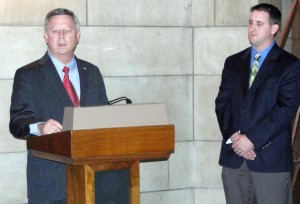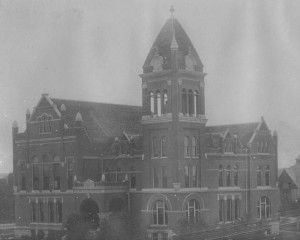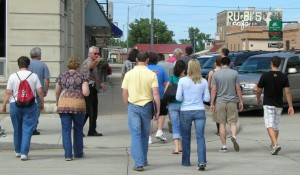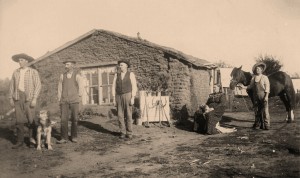The Built Environment
“Architecture doesn’t just function; it expresses the human condition… It communicates identity and enables people to speak, to participate, to act.”
In the early days of White settlement, each building that arose on the Plains was a symbol of the transformation of the Great American Desert into an outpost of our civilization.
The heating and cooling costs of these buildings were at most an afterthought.
In rural communities today, though, more and more older buildings sit empty because it’s become too expensive to heat and cool them. With energy costs increasing this problem will only grow.
In an attempt to find eco-friendly ways to reduce energy costs for the Boone County Historical Society’s museum building and for a proposed art gallery to be located in an older building in the downtown, Albion resident Paul Hosford and his wife Lori began looking for someone with expertise in the field of sustainable building design. Their search soon led them to German eco-architect/professor Martin Despang, who was then teaching at the UNL College of Architecture.
Professor Despang, now teaching at the University of Arizona, is a leader in the use of the sun, wind and earth to heat and cool buildings. (His net zero kindergarten in Hanover, Germany, is included in the prestigious Phaidon Atlas of 21st Century World Architecture.) After visiting Boone County, Professor Despang proposed letting his 4th-5th– and 6th– year students work with residents in Albion, St. Edward and Petersburg to identify community needs and develop sustainable, affordable and aesthetically pleasing solutions using locally-available materials. With the support of the Dean of Architecture, Wayne Drummond, UNL began a continuing partnership with Boone County, exploring ways of conserving energy in both new construction and in renovating existing structures.
Professor Despang has continued his involvement with Boone County during his first semester at the University of Arizona, where his students have developed innovative and energy-friendly new high school designs for the Boone Central school district.
Central to Professor Despang’s approach to these projects has been having his students get to know the communities they are working in and then design from the perspective of a potential resident. Since the first students began working with Boone County in the fall of 2009, nearly 100 initial concepts for new buildings and modifications to existing buildings have been developed with additional projects currently under consideration.

During a review of the first semester’s designs held in Nebraska’s State Capitol, Governor Dave Heineman praised not only the diversity and sustainability of the designs, he also remarked that this was a successful example of involving young people in the rural development process.
Albion City Administrator Andy Devine listening to Governor Heineman speak at the review.
Fundamental to the students’ designs has been an understanding not only that current and future energy needs must be addressed, but that buildings can do much to bring people together. For as environmental justice advocate Majora Carter observed in her foreword to The Power of Pro Bono by John Cary,
“Our built environment is our environment… How we design and operate our built environment determines how people will move through it, to it, or out of it. When we let the design of our communities sink to the point where the only move people want to make is away, we create problems. Combining innovative thought with practical local knowledge dramatically increases the chances for something good to happen in those areas.”
Professor Despang’s students have demonstrated that an important aspect of community development is its physical structure – the built environment that expresses who people are and invites them to interact. For as John Cary, executive director of Public Architecture from 2003 to 2010, put it in The Power of Pro Bono,
“Spaces can enliven. They can excite the soul, fill us with a sense of wonder, and bring us comfort and reprieve. When planned with their ultimate users in mind, spaces become more than bricks and mortar and glass and steel; they become incubators for serving, working, living and loving. This is what architecture is all about – providing spaces that empower people to live their best lives.”
To see some of Professor Despang’s professional designs, please click below:
abridged portfolio Despang Architekten 2010[1]
Student Designs
Fall 2009 UNL designs Spring 2010 UNL designs Fall 2010 University of Arizona designs Masters projects
Sod house in southern Boone County, circa 1890
Prairie sod proved an effective insulator against the extremes of temperature found on the Great Plains. A number of the students’ designs utilize the insulative value of the earth in modern and attractive ways.


